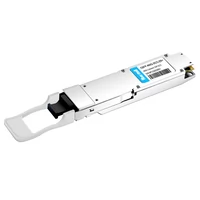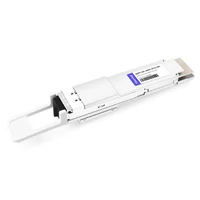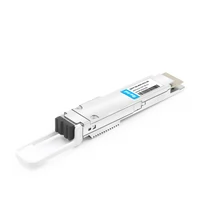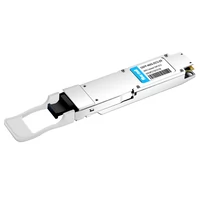The rapid development of data center networks has led to a soaring demand for optical network bandwidth, which grows at an annual rate of over 20%, driving the optical transmission network towards higher-speed and higher-capacity solutions.
At present, single-wavelength 100G/200G WDM systems have been commercially deployed on a large scale in operators’ backbone networks, and single-wavelength 400G systems have moved from metropolitan area networks to backbone networks, becoming the focus of attention and application in the industry. As the 400G optical transmission standards in various standard organizations reach a consensus, Beyond 400G has emerged as a new topic of interest for various standard organizations.
Table of Contents
ToggleOverview of Optical Transmission Standard Organizations
The international standard organizations involved in optical transmission technology mainly include ITU-T SG15, OIF, IEEE802.3, and various MSAs (multi-source agreement), and the distribution of responsibilities and the correspondence between each international standard organization and optical transmission equipment are shown in Figure 1.

Figure 1. The relationship diagram of international standard organizations
The 100/200/400/800GE Ethernet interface specifications output by the optical transmission customer equipment are defined by IEEE802.3. The customer-side optical module-related standards for connecting WDM equipment and customer equipment are defined by OIF/MSA. The service signal encapsulation and optical transmission system involved in WDM equipment, system specifications are defined by ITU-T SG15, among which ITU-T SG15 Q5 involves optical fibers, Q6 involves WDM systems and optical devices, and Q11 defines OTN frame structure, mapping, and other technologies. The line-side optical module implementation is defined by OIF/MSA.
The domestic standard organizations for optical transmission are mainly CCSA TC6 WG1 and WG4 working groups. The WDM equipment standardized by WG1 has a high authority, basically reflecting the requirements of the three major domestic operators and the capabilities of equipment vendors, while WG4 mainly defines optical module standards for different speeds and applications.
The Progresses of Beyond 400G Optical Transmission Standards
OIF has been leading the standardization of 400G and 800G coherent optical systems among various standard organizations in recent years. In 2022, OIF completed the 400ZR standard specification. It is currently working on the specification of 800G LR and ZR, which includes technical aspects such as optical system parameters, FEC, DSP, and OTN mapping. It is expected to be completed by the end of 2024. OIF’s standard progress has an important impact on the technical trends of ITU-T and IEEE 802.3’s 800G standardization.
IEEE802.3 has absolute authority in the specification of Ethernet interfaces. IEEE802.3 is standardizing 800G/1.6T Ethernet interfaces, including different transmission distance interfaces for two routes of single-channel 100G and 200G. It is worth mentioning that in 2023, there was a fierce discussion in the IEEE802.3dj project on whether to adopt IMDD (intensity modulation and direct detection) or coherent technology for the 800G 10km application. Finally, 802.3dj decided to set two project objectives for 800G 10km, using different technical solutions. It can be seen that with the increase of single-channel rate, coherent technology is constantly sinking and expanding its application scenarios.
ITU-T SG15 Q6 working group has made slow progress in the standardization of 400G/800G since it released the 100G DWDM specification in 2018. The root cause is that ITU-T is committed to standardizing DWDM systems that are compatible with multiple manufacturers and tries to find a parameter to determine the quality of the transmitter, but it is difficult to achieve satisfactory results for DWDM systems with coherent modulation. In February 2023, at the Q6 meeting, it was decided to restart the standardization of 400G and adopt an open attitude towards the standardization of 800G. At the same time, Q6’s future demand for C+L extended band was recognized in the application of 800G DWDM, and Q6’s performance in the standardization of 400G and 800G is worth looking forward to.
CCSA TC6 WG1 has successively completed a series of industry standards on Nx400G optical wavelength division multiplexing (WDM) systems, including “Technical Requirements for Nx400G Optical Wavelength Division Multiplexing (WDM) Systems”, “Technical Requirements for Metropolitan Nx400G Optical Wavelength Division Multiplexing (WDM)” and “Technical Requirements for Optical Wavelength Division Multiplexing (WDM) Systems with Extended C Band”. These standards cover the applications of 400G backbone, metropolitan and extended C band, and the modulation formats mainly specify 2x200Gbit/s PM-16QAM/PM-QPSK and 400Gbit/s PM-16QAM. At the same time, with the development of DSP (digital signal processing) and high-performance FEC (forward error correction) technologies and the network construction needs of operators, two industry standards, “Technical Requirements for Nx400Gbit/s Ultra-long Distance Optical Wavelength Division Multiplexing (WDM) Systems” and “Technical Requirements for Metropolitan Nx800Gbit/s Optical Wavelength Division Multiplexing (WDM) Systems”, were initiated in the past two years. These standards will specify WDM optical systems based on QPSK modulation formats above 120Gbd, and start the research on 800G metropolitan networks, which puts China at the forefront of long-distance and high-speed DWDM standardization.
CCSA TC6 WG4 has completed seven series of standards for 400G intensity modulation and phase modulation technologies in the past three years and initiated the standardization of 800G optical modules to support the application needs of optical system standards.
The Progress of 400G and Beyond 400G OTN
ITU-T SG15 Q11 working group, as the main standard setter of OTN technology, reached a consensus on phased discussion beyond 400G OTN standards. The first phase mainly focuses on the formulation of 800G OTN standards, mainly focusing on how to carry 800GE Ethernet services and 800G FlexO interface technology, etc. It is expected to complete the relevant standards by the end of 2023. The second phase focuses on OTN interface technology above 800G, which will be a key point of standard discussion after 2023.
In the first phase of work, ITU-T SG15 Q11 has reached many consensuses. In terms of carrying 800GE client services specified by IEEE802.3, the ODUflex (800G) rate and the reference point of 800GE to OTN mapping are determined. The two data streams in 257B format recovered from the 800GE Ethernet interface are interleaved according to the granularity of 257B to form one data stream. At the same time, in order to solve the alignment and MTTFPA (mean time to false packet acceptance) problems caused by 257B, the ODUflex 4×3808 row payload is divided into integer multiples of 257B blocks and 38bit padding, among which 32bit is used to carry CRC32 to complete the related error marking function. In order to simplify the clock multiplication relationship between ODUflex and Ethernet interface, rate compensation is also required for this 257B data stream to make up for the rate of AM deleted in 800GE Ethernet processing. Compared with 400GE, in order to save transmission bandwidth and narrow the gap between the Ethernet service rate and OTN rate, increase the possibility of using the same module for Ethernet service and OTN rate, the reference point of 800GE to OTN mapping is changed from 66B code stream to 257B code stream. The processing functions from the 800GE PMA interface to the OTN transmission network are shown in Figure 2.
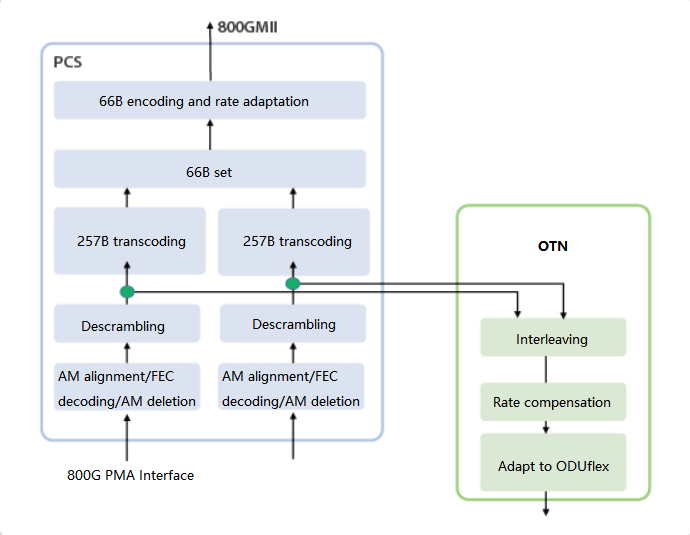
Figure 2. Schematic diagram of processing functions from 800GE to OTN
In terms of FlexO interface technology, according to different transmission distances, it is divided into FlexO-x-RS short-distance interface and FlexO-x-D long-distance interface. Among them, the FlexO-x-RS short-distance interface is specified in G.709.1, mainly used for inter-domain and intra-domain interconnection, and the transmission distance is usually within 40km. FlexO-x-D interface is specified in G.709.3, mainly used for long-distance interconnection of coherent interfaces, and the transmission distance is usually 100~450km. In terms of short-distance interface standards, it is determined to revise G.709.1 first, define the general FlexO-8 frame structure, rate, overhead, and mapping technology, and also make it easier for other standard organizations such as OIF or OpenRoadm to refer to the relevant frame structure. Since B100G FlexO can well support up to 800G rate, it is determined that the 800G FlexO interface continues to reuse the FlexO frame structure based on 1280×5140. The newly added mapping technologies include direct mapping multiplexing of Ethernet services to the FlexO-xe path. This service path reduces the ODUflex channel layer and OTUCn multiplexing section compared to the traditional B100G mapping multiplexing path and allows multiplexing multiple 100GE/200GE/400GE or 1 800GE mapping directly to FlexO-xe.
In terms of long-distance interface standards, compared with 400G FlexO interface, with the increase of single-port 800G transmission bandwidth, under the premise of transmitting the same distance, the requirements for optical devices and modules are more stringent, so a down-speed interface FlexO-xe-DO is added on the original FlexO-x-DO full-rate interface, which not only reduces the OTN multiplexing level but also lowers the insertion frequency of DSP frame pilot signal of FlexO-x-DO interface. This interface is mainly suitable for point-to-point Ethernet service multiplexing transmission and does not support OTUCn or ODUflex transmission. Compared with the OIF 800ZR interface, it can extend the transmission distance through the FlexO 3R regeneration function.
In general, the optical transmission standards at 400G rate have been basically completed in domestic and foreign standard organizations, and DWDM long-distance applications based on QPSK modulation above 128GBd are the focus of standards; while B400G and above rates including 800G and even 1.6T have become the research hotspots of domestic and foreign standard organizations such as ITU-T, OIF, IEEE802.3 and CCSA. Modulation formats, mapping technologies, extended C+L optical systems, high-performance FEC and other technologies will become the key technologies for standardization.
Related Products:
-
 OSFP-400G-DCO-ZR+ 400G Coherent OSFP-DCO ZR+ C-band Tunable Optical Transceiver Module
$7000.00
OSFP-400G-DCO-ZR+ 400G Coherent OSFP-DCO ZR+ C-band Tunable Optical Transceiver Module
$7000.00
-
 QSFP-DD-400G-DCO-ZR+ 400G Coherent QSFP-DD DCO C-band Tunable Optical Transceiver Module
$6500.00
QSFP-DD-400G-DCO-ZR+ 400G Coherent QSFP-DD DCO C-band Tunable Optical Transceiver Module
$6500.00
-
 QSFP-DD-400G-DCO-ZR 400G Coherent QSFP-DD DCO C-band Tunable Optical Transceiver Module
$6000.00
QSFP-DD-400G-DCO-ZR 400G Coherent QSFP-DD DCO C-band Tunable Optical Transceiver Module
$6000.00
-
 OSFP-400G-DCO-ZR 400G Coherent OSFP-DCO ZR C-band Tunable Optical Transceiver Module
$7000.00
OSFP-400G-DCO-ZR 400G Coherent OSFP-DCO ZR C-band Tunable Optical Transceiver Module
$7000.00

